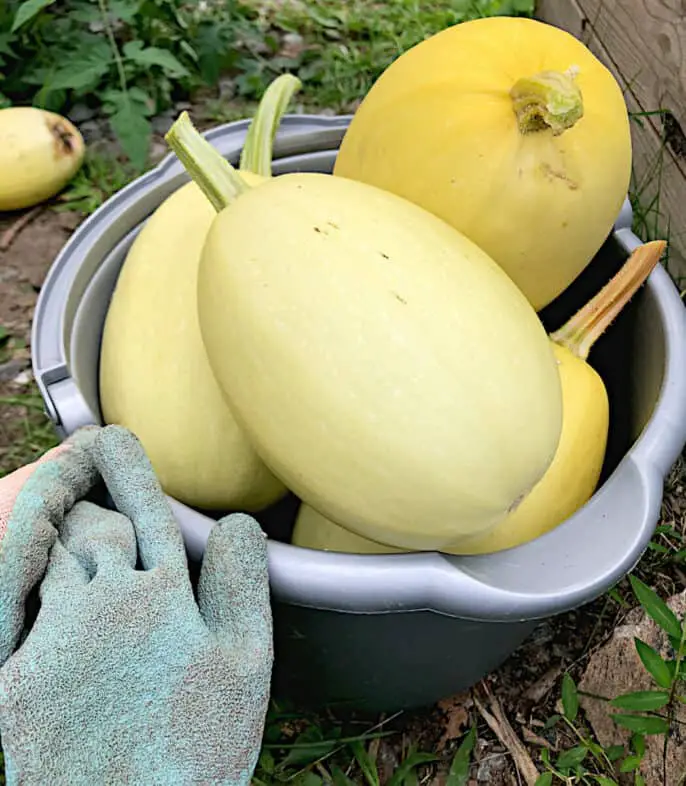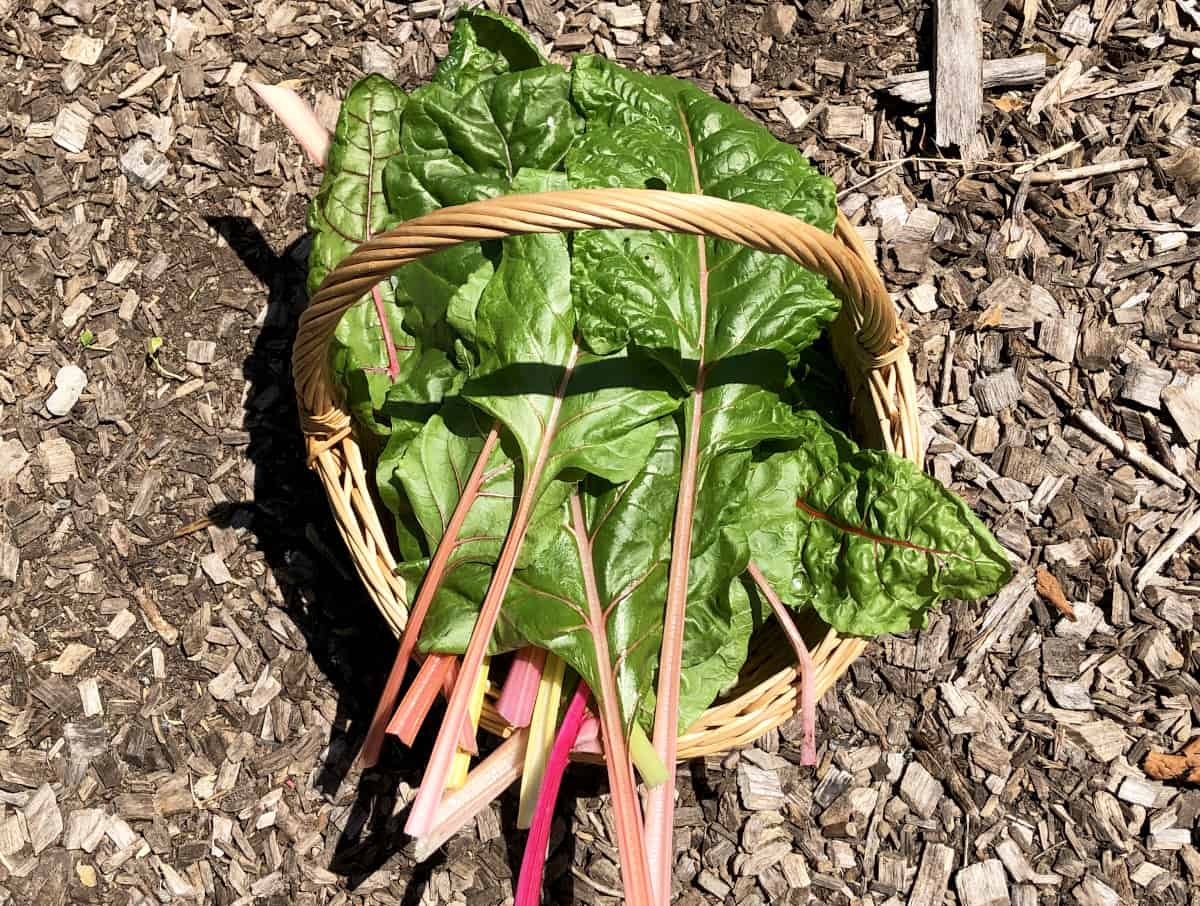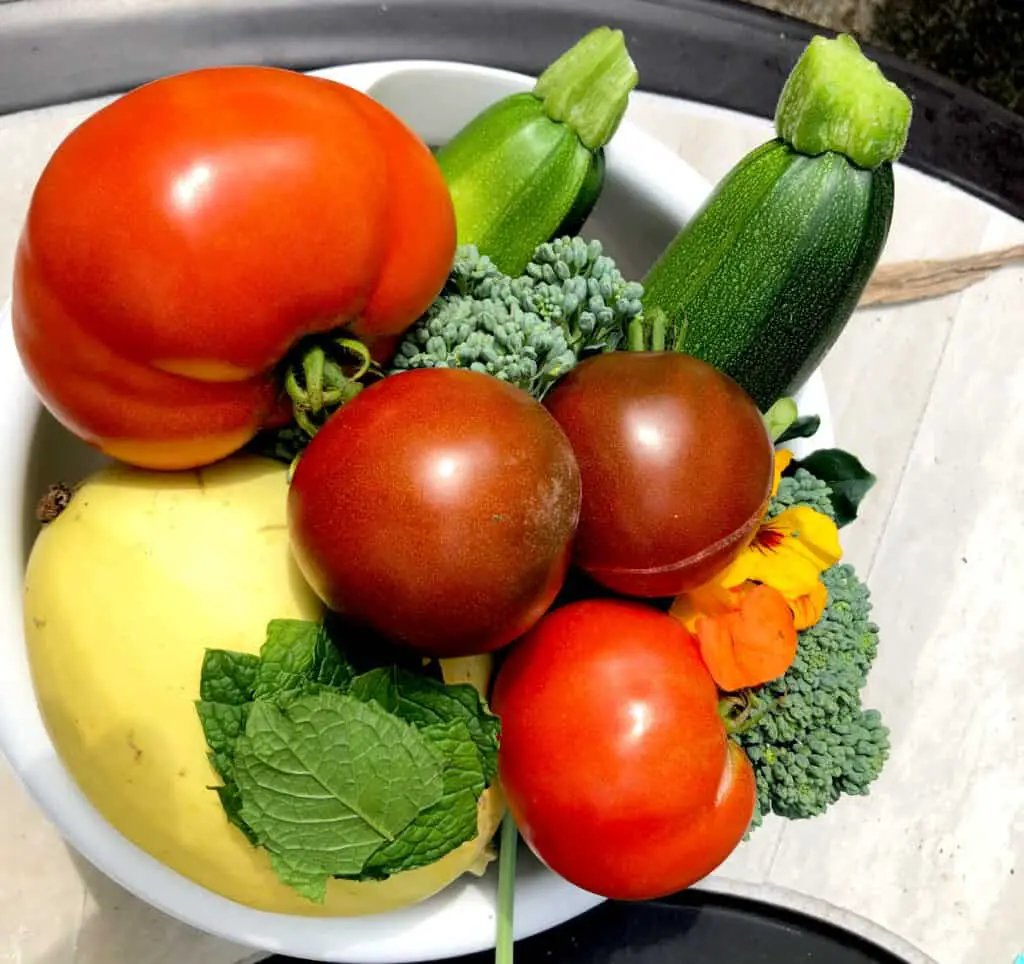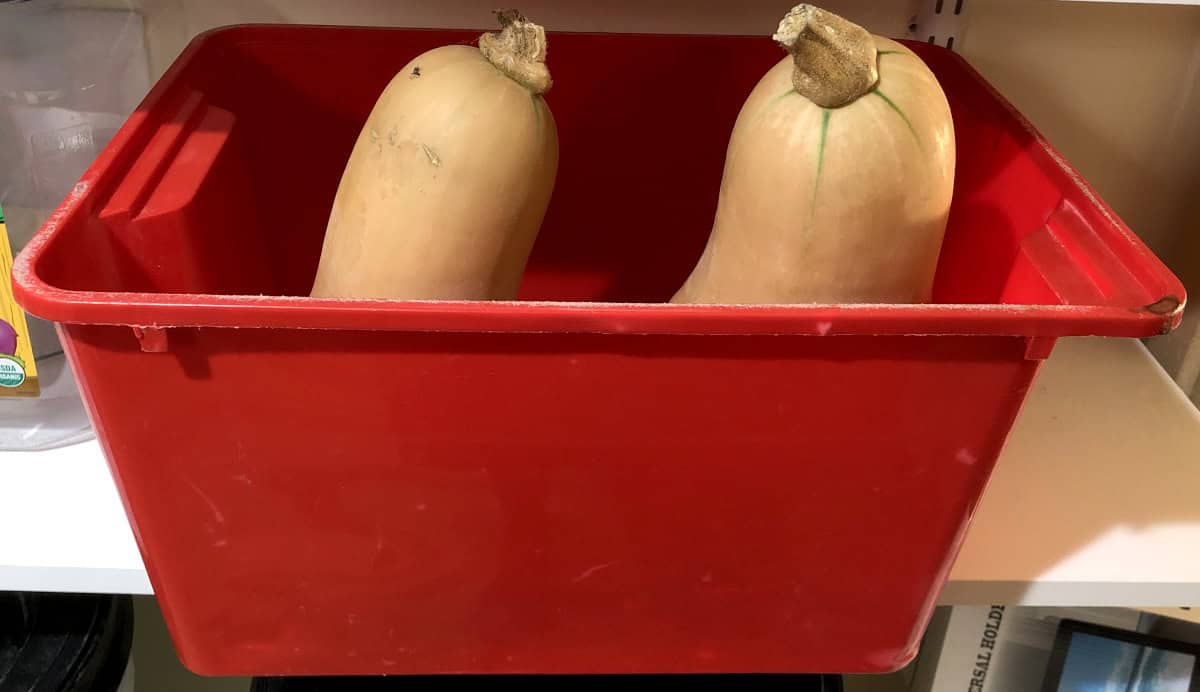In my garden, I focus on the easiest food to grow and store in my pantry. After years of growing varieties of vegetables and fruits, I narrowed it down and grow only a handful of our family favorites to eat fresh as well as to stock our pantry with.
The easiest food to grow for pantry storage is tomatoes, beans, winter pumpkin, summer squash, cucumbers, garlic, potatoes, beets, carrots, parsnip, celeriac, celery, and herbs. These vegetables are easy to grow and fairly easy to store either on shelves or in the freezer. There are other vegetables that are easy to store as well but can take some practice to grow, those can be onions, peppers, and cabbage.

Grow reliable, easy-to-grow crops that produce prolifically
Reliable easy-to-grow crops that produce prolifically are the ones that you can harvest and come again.

Let’s take a look at beans for example. You harvest them and let the plant grow more. Then after some time you come again and harvest some more beans, and you let the plant grow. You come again and harvest again. This is an easy-to-grow and very prolific plant. It should be in your garden because you can harvest lots of beans off of one plant.
Focus on reliable, easy-to-grow crops that produce prolifically. Easy-to-grow crops are the ones you can sow or plant in your growing space and almost forget them. They don’t need too much babysitting as I call it. They need watering, but it’s manageable. They don’t have too many pests and don’t require too much knowledge to grow them. I found that beans and winter squash as well as tomatoes grow almost like weeds in my space. They don’t have as many pests as cucumbers or summer squash for example which you have to spray and check daily for cucumber beatless or squash borers. I find myself checking other vegetables daily but beans, tomatoes, and winter squash I just pass them by and check on them only when I have time and they do well.
The same goes for tomatoes. One plant produces lots of tomatoes. The same goes for summer and winter squash, potatoes, and peppers. If it produces more than one fruit per plant, and in the case of a winter squash the fruit you get off it is heavy, it can wait for several pounds. These are vegetables that should be in your pantry stocking garden.
On the other hand. Let’s take a look at cauliflower, corn, and broccoli, you only harvest them once. Broccoli can be an exception, if you let it grow it can actually produce some side shoots, although not as large as the main head. These vegetables are my favorite but I keep in mind that they take space and time and I can only harvest them once. If you are short on space, grow vegetables that are prolific in the harvest.
As you grow your veggies you will learn with what vegetables you spend the most time like watering them, managing their pests, managing their growth, or harvesting them frequently. Take note of it and in the next growing season you will be much wiser and more decisive on what you will and won’t grow because you will remember that vegetable in a positive or negative way.
There are some veggies I remember in a negative way, and I almost gave up on growing them. But every year I felt like I want to conquer them! I want to win over them and make them a success in my garden. I remember I wanted to conquer carrots so badly! I saw them every year and they failed me till I won! Now I am not scared to sow carrots anymore. I just learned by failing that they need soft and very nutritious soil and lots of water and they will grow.
What vegetables to grow in my garden that would thrive
Grow vegetables that do well in your local area. If you don’t know what grows well in your area, find local garden groups online or in person and ask what grows well in their gardens. You have the best chance to succeed when you grow the produce that thrives in your local growing zone. Another way to find out what grows well where you live is to take a stroll in your local farmers market. It’s called a ‘local’ farmers market which means veggies you see there were grown locally, there is a high chance they should do well in your garden as well.

Take into account that each zone, region, and each garden will have different things on the list that grow easily or have difficulty thriving. For example, I struggled for several years to grow carrots. All I got were little thin orange sticks. It was frustrating, but that was all my garden could produce. I didn’t give up on carrots, and one year I trench composted (meaning buried kitchen scraps over the winter) directly in my garden bed and then earl spring planted cabbages with carrots in between cabbages. That year I had the best carrots, they actually looked like mature carrots and were fairly large. I was a proud gardener. This year, I plan to sow my carrots between cabbages as well. If something works, just repeat it. Maybe the reason I didn’t get any carrots in previous years was that my soil was still being built and brought forth harvest once it was full of beneficial bacteria, the right compost, and proper nutritional value.
Learn you will get to know your soil and your garden better each year and learn what grows well in your growing space and what you struggle with. If you watch baking shows, each baker tells you what temperature to bake and for how long. But they always add that each baker’s oven is different so you should go with what you know your oven does.
I have some fruit not definitely not full baskets like my neighbors. In my garden, I simply struggled with zucchini. My neighbors and even my sister-in-law had amazing zucchini, large, heavy, really amazing continuous harvest of it. But in my garden, they struggle and then most of the time borers just finish them up. But I don’t give up on them. If I could grow carrots, I will one day get to harvest an amazing harvest of zucchini. I don’t give up on them, although they did upset me for years.
Another veggie that just didn’t want to grow in my garden but was thriving in other gardens was radish. I am talking radish. Early spring, I heard everyone talking bout their amazing radishes! And mine were just hard red sticks, not edible, not plump, just hard woody red sticks. Seriously, the easiest and one of the fastest to harvest veggies I was not able to even get one right. But that too passed. I tried to grow them every year and last year they were so beautiful I couldn’t believe they were pulled off of my garden! I had nice size radishes and was very pleased. I blamed the previous failure of radishes on the soil too. I think it really takes time to build up healthy soil plus an extra time when we mess it up thinking we are actually building it.
Let’s be transparent here, as I talk to fellow gardeners, we all have that one or two veggie we struggle with. For me it was radishes, now they are not a problem anymore. Then it was carrots, till I was able to conquer them as well. We all have that veggie that trouble us, that doesn’t like to grow in our garden, or grow but don’t fulfill our expectations of how beautiful we would like them to be. And that’s ok. Some veggies simply produced amazingly and others struggled. We all have those veggies that do well in our garden and that which struggle.
If you like to grow a specific vegetable that simply struggles in your garden, just focus on building the healthy soil it needs and study the care it needs. I think one additional reason my radishes were not doing well was that they needed lots of water and I was probably not watering them enough, the same goes with carrots. They both need lots of water.
What vegetables last longest in storage, on shelves
Vegetables that don’t need refrigeration and last long in storage are garlic, onion, potatoes, dried beans, dry corn, winter squash, butternut squash, and spaghetti squash, and root vegetables like carrot, celeriac, rutabaga, parsnip, and beets. They require only cool, dark place, airflow, and root vegetables also like adequate moisture. Fruits like apples can last long in storage as well.

Not all vegetable stores are equal. Some are very easy and hustle-free to store just sitting on shelves, in cardboard boxes, or buried in sand, and some need refrigeration.
Easy vegetables to start from seed indoors
What is the easiest food crop to grow?
Most high-yielding fruits and vegetables to grow in pantry stocking garden

